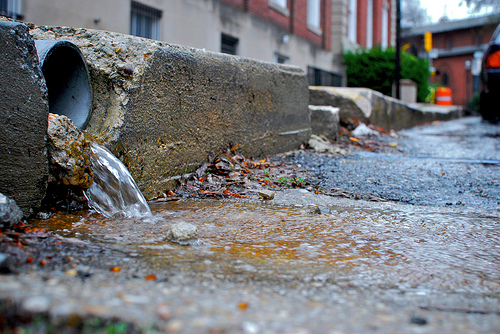How is Urban Sprawl Affecting Canada's Physical Systems?
Urban sprawl affects many different aspects of Canada's physical Systems: land, water, air, plants, animals, and climate.
Land
 |
| (DOMVS) |
"most urbanized regions of Canada now lie beneath sprawling housing developments, highways,strip malls and other infrastructure. As urban communities have grown over the years, agricultural lands and natural areas have far too often been drained, dug up and paved over" ( David Suzuki and Faisal Moola).The population growth in large urban area such as the Greater Toronto Area (GTA) leads to the expansion of the city over more fertile land that should be used to feed Canada's growing population. Fertile topsoil needed for agriculture must be protected in order to sustain our food supply.
Water
 |
| (Chesapeake Bay Action Plan) |
Air
 |
| (HOW STUFF WORKS AUTO) |
Plants
 |
| (Landscape For Life) |
"Species introductions can occur accidentally, when organisms "hitchhike" into new systems on other animals or objects. For instance, zebra mussels are thought to have been brought into the Great Lakes in the ballast water of tankers that traveled up the St. Lawrence Seaway"(Impacts on Biodiversity)
If new species come in to an ecosystem they could become invasive and if they have no natural enemies in their new environment they may be a harm other species.
Animals
 |
| (THE SUN) |
As cities expand more roads are created and this can
have a huge impact on animals.
"The most obvious and immediate impact is road kill. [on roads] they can get run over by vehicles or shot by newcomers. Other animals cross road for a promising green patch on the other side, only to end up dead in a ditch, terminating a future generation"(Canadian Geographic)
Animals do not know about the dangers of the road
and as roads continue to be built the number of animal casualties also increase.
Urbanization is literally killing animals.
Climate
 Urban areas have a high population and many
buildings which means more vehicles and more carbon emissions that lead to an
increase in temperature.
Urban areas have a high population and many
buildings which means more vehicles and more carbon emissions that lead to an
increase in temperature."For a number of reasons, cities are always warmer than rural areas – a condition attributed to the urban heat island effect. The urban areas that sprawl have twice as many days with extreme heat when compared to cities that grow more compactly"(B, Stone, JJ Hess, and H. Frumkin).
Urbanization is a huge factor of climate change and
sprawl is only increasing the number of cars on the road and the amount of
carbon emitted into the atmosphere.
No comments:
Post a Comment